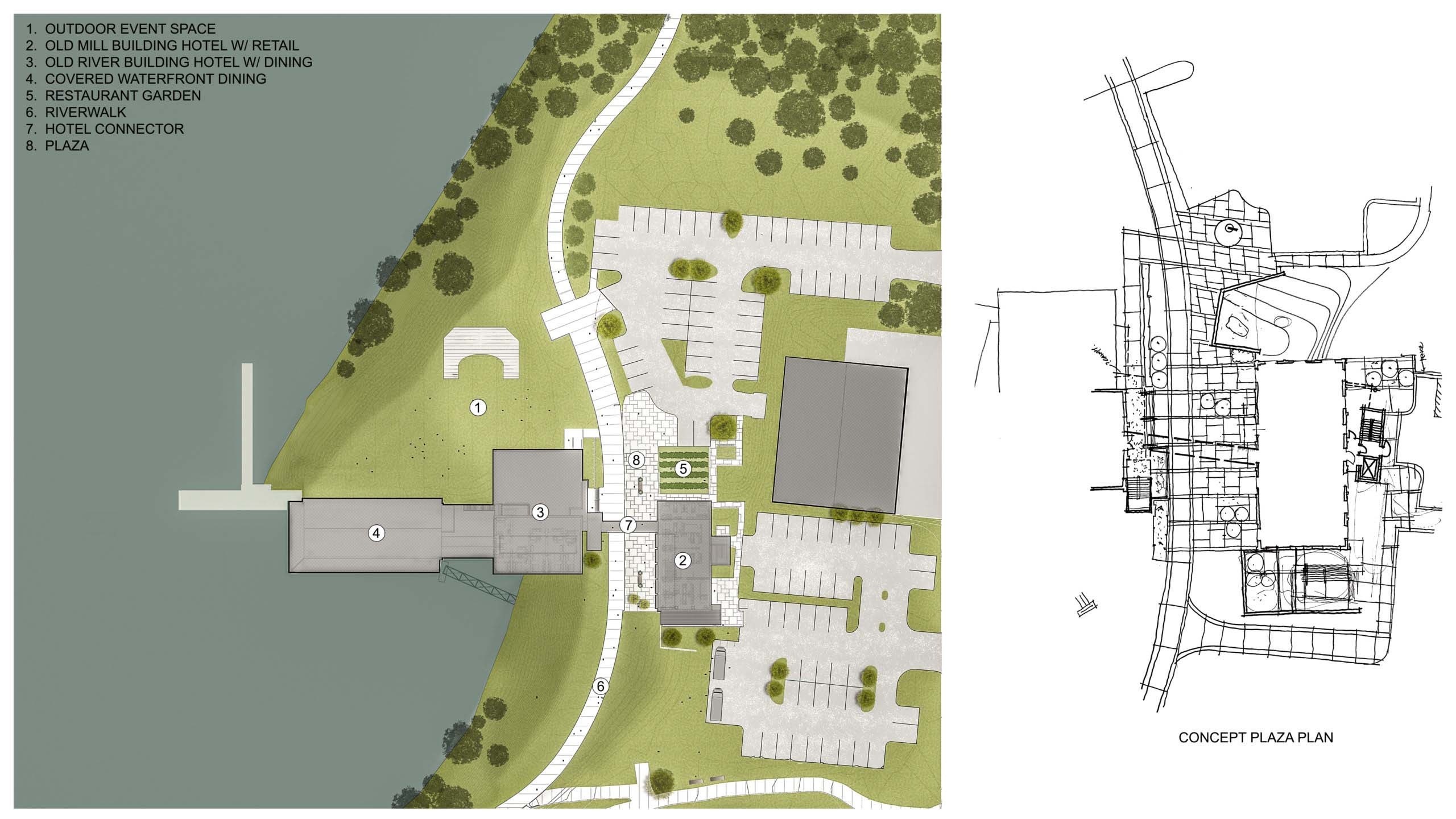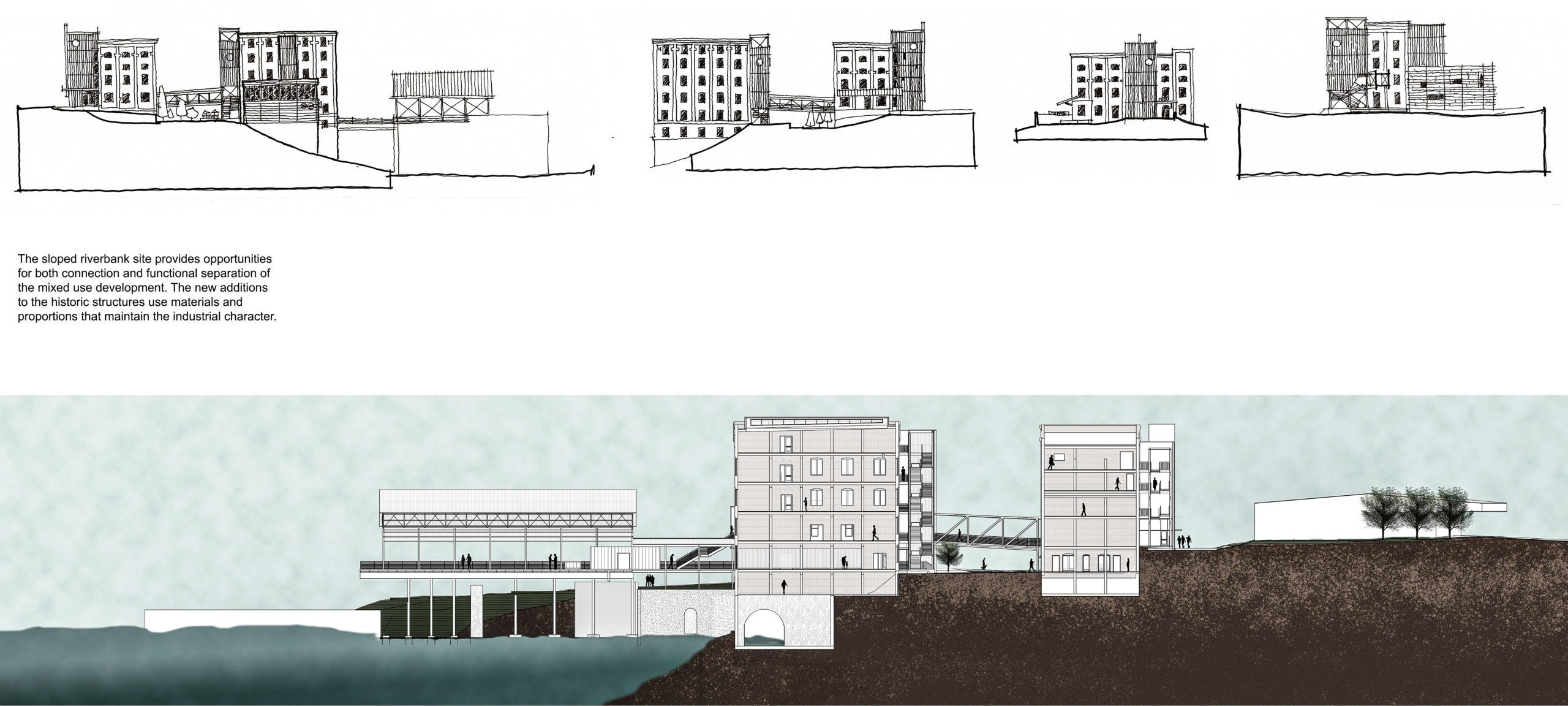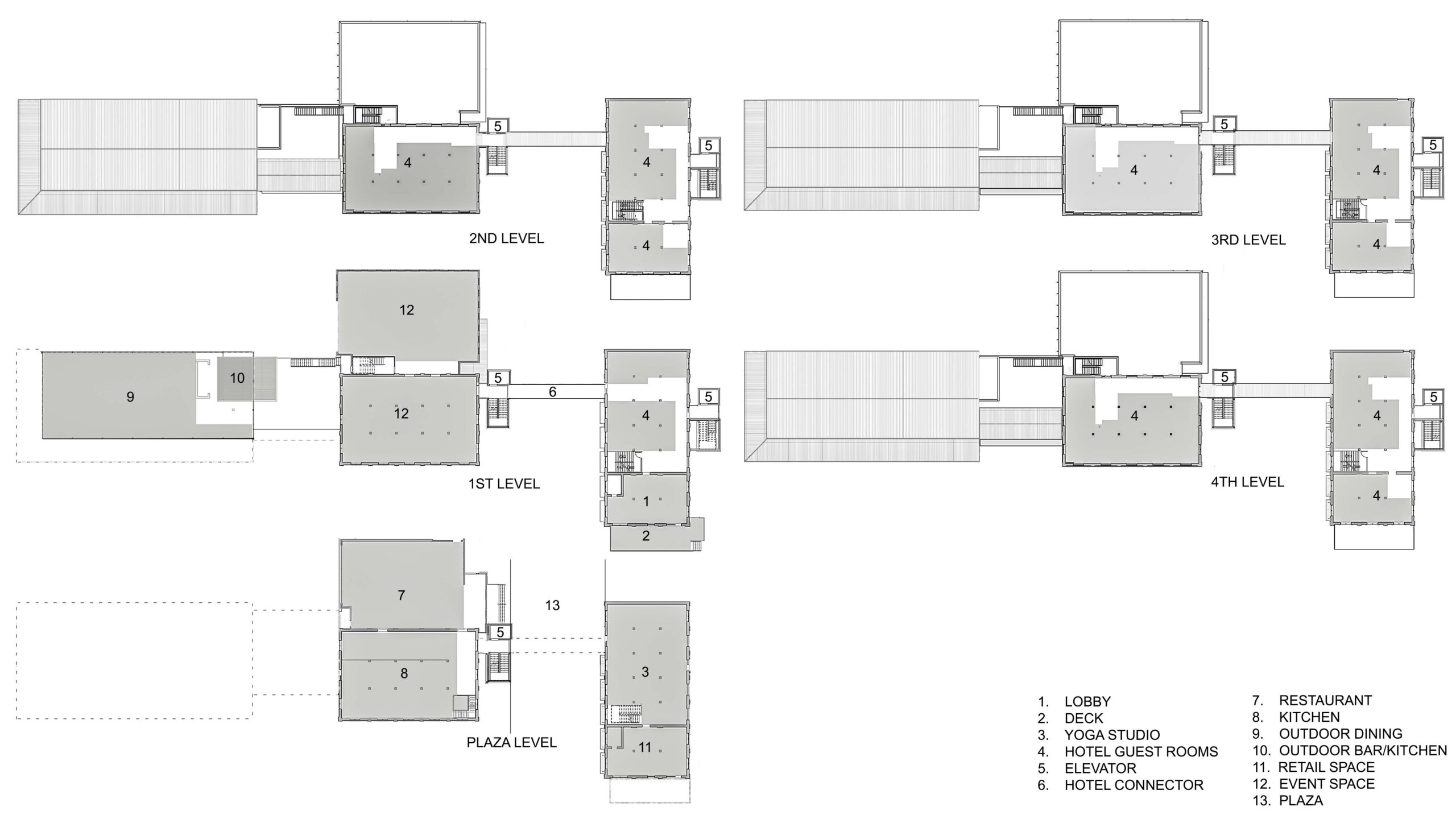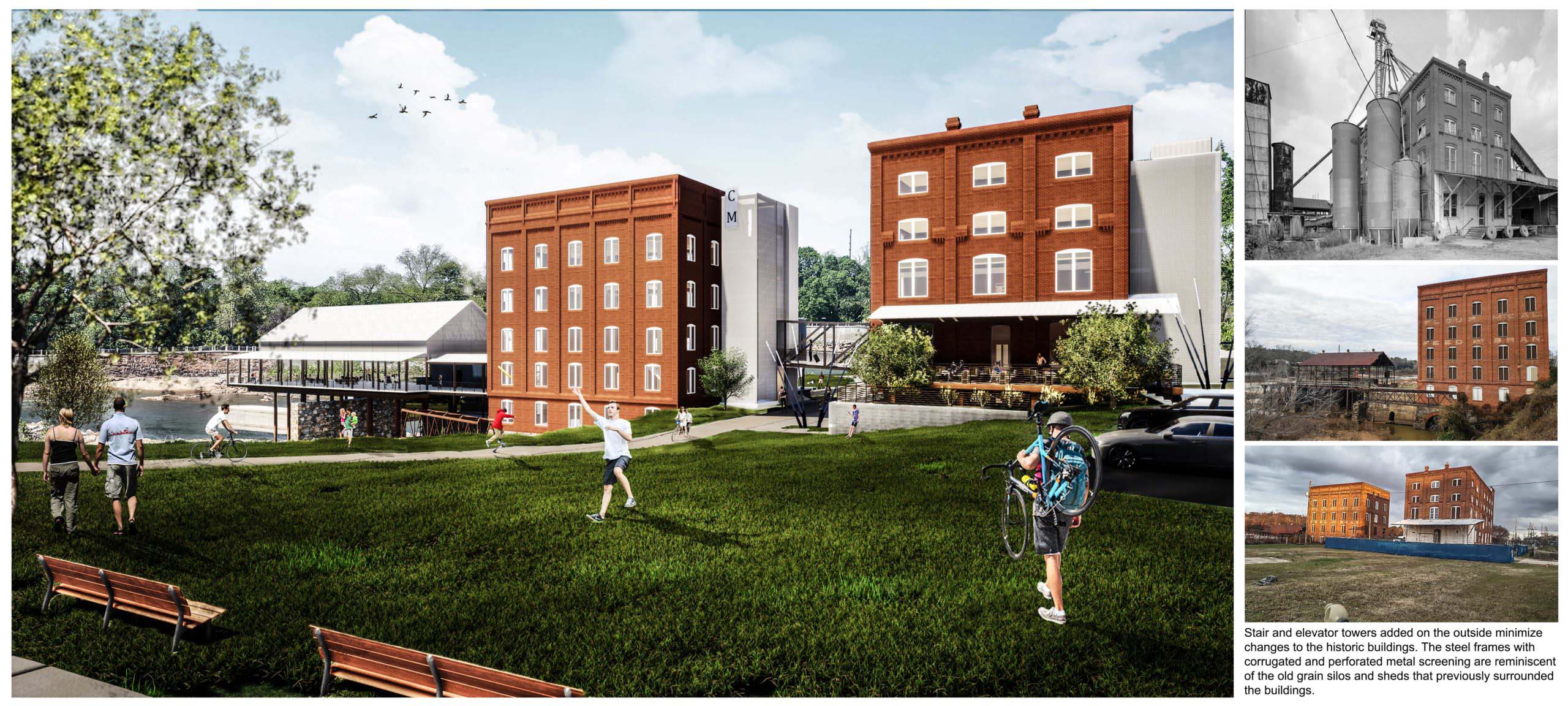7 VotesYear: 2020|Entry Categories: Unbuilt Project
City Mills
An abandoned historic grist mill and grain storage warehouse on the Chattahoochee River are reimagined as a mixed-use commercial and cultural hub. Located in an underdeveloped area between a thriving downtown and an historic neighborhood, this project could be the catalyst for community connectivity and growth. The historic buildings cohere with new additions reminiscent of the original industrial structures that were lost to the weathering of time.
Design Challenge
The approach to adaptation of the buildings and the site was carefully considered to maintain the historic character of the locale. The buildings, retaining walls, and open pavilion are kept, stabilized and integrated with new additions. Stair and elevator towers added on the outside of the building footprints minimize impact to the historic buildings. The steel frames with corrugated and perforated metal screening are reminiscent of the old grain silos and cargo ramps that used to surround the buildings. An addition to the river building is built over the foundations of the old turbine equipment shed.
The sloped riverbank site is both a challenge and an opportunity for site connection and functional separation of the mixed use development. Building entrances at varying levels allow for public and private approaches to the site. A hotel will operate on the upper levels, accessed from the parking, while retail and dining spaces are mainly accessed from the pedestrian corridor and riverfront. The sloping lawns surrounding the site transition the public toward the waterfront and provide gathering and event space.Physical Context
This old grain warehouse was one of several hydro-powered manufacturing plants built along the Chattahoochee River in Columbus, Georgia after the Civil War. The building on the river contained a turbine-driven grist mill; the other was storage and distribution. Several metal silos and lift towers once surrounded the buildings, but have long since disappeared with age.
With 20th century modernization, this building became vacant. Much of the industrial district around it also faded. It is now in the center of a three mile stretch of waterfront that is mostly abandoned and underutilized, despite the revitalization of the downtown district to the south and the historic neighborhood to the north. The adaptation of this prominent site is an anchor project to the City Village Master Plan, a local vision for a live-work community.
Passing directly between the two buildings, the Riverwalk, a pedestrian trail connecting 15 miles of waterfront, is the main artery for connection in the proposed redevelopment area. At this site, it would widen to a large plaza activated with storefronts and dining. This project could form a nexus along the recreational path with public boat access, event space, cultural and retail attractions. The building would spur economic growth, infilling new businesses along the 2nd Avenue commercial corridor to the east.
Share This, Choose Your Platform!








